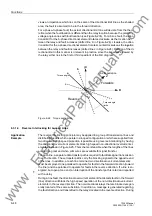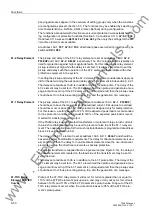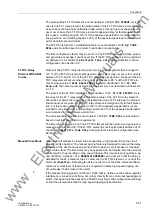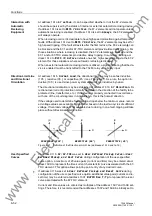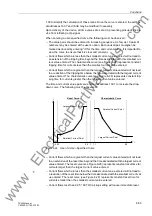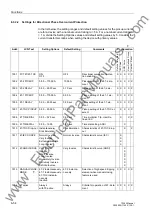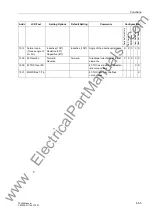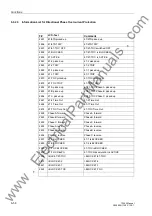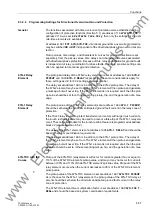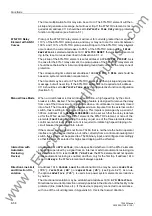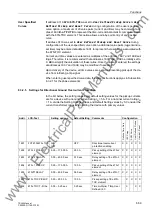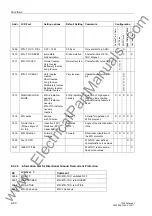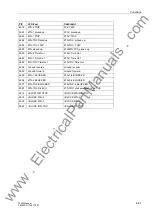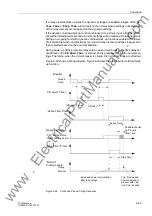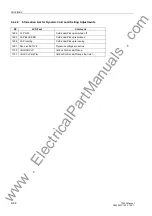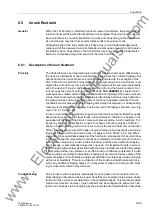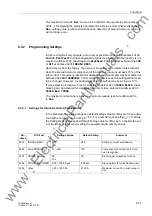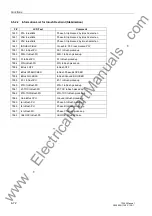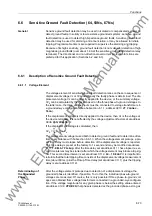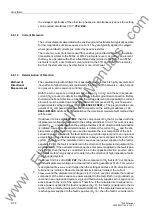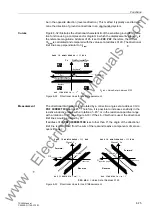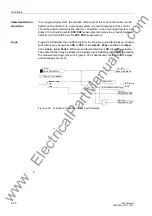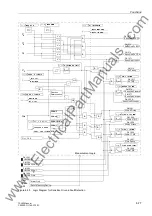
Functions
6-62
7SJ63 Manual
C53000-G1140-C120-1
6.4
Dynamic Cold Load Pick-Up Function (50c, 50Nc, 51Nc, 67c, 67Nc)
General
With the dynamic cold load pick-up feature, it is possible to dynamically increase the
pickup values of the directional and non-directional overcurrent relay elements when
dynamic cold load pickup conditions are anticipated (i.e. after a long period of zero
voltage). By allowing pickup settings to increase dynamically, it is not necessary to in-
corporate dynamic cold load capability in the normal pickup settings, and directional
and non-directional overcurrent protection may be set more sensitive.
6.4.1
Description of Dynamic Cold Load Pick-Up Function
Effect
The dynamic cold load pick-up function is enabled at address
. When using it ,
there are two primary methods used by the device to determine if the protected equip-
ment is de-energized:
•
Via a binary input, an auxiliary contact in the circuit breaker can be used to deter-
mine if the circuit breaker is open or closed. If the circuit breaker is open, the equip-
ment will be considered de-energized. If this method is chosen, address
6WDUW&RQGLWLRQ
should be set to
%UHDNHU&RQWDFW
.
•
The current flow monitoring threshold (Subsection 6.1.1) may be used to determine
if the equipment is de-energized. If this method is chosen, address
should be
set to
1R&XUUHQW
.
If the device determines the protected equipment is de-energized via one of the meth-
ods above, then the higher pickup values will become effective for the relay elements
once a specified time delay has elapsed. The
&%2SHQ7LPH
, set at address
controls how long the equipment can be de-energized before the dynamic cold load
pick-up function is activated. Figure 6-30 shows the logic diagram for dynamic cold
load pick-up function. When the protected equipment is re-energized (i.e. the device
receives input via a binary input that the circuit breaker is closed or the current flowing
through the circuit breaker increases above the current flow monitoring threshold set
at address
), a second time delay referred to as the
$FWLYH7LPH
is initiated.
Once the
$FWLYH7LPH
elapses, the pickup values of the relay elements return to
their normal settings. The
$FWLYH7LPH
is set at address
and controls how long
dynamic cold load pick-up settings remain in place once the equipment is re-ener-
gized. Upon re-energizing of the equipment, if the measured current values are below
the normal pickup settings, an alternative time delay referred to as the
6WRS7LPH
is
also initiated. As in the case with the
$FWLYH7LPH
, once the
6WRS7LPH
elapses,
the pickup values of relay elements change from the dynamic cold load pickup values
to their normal settings. The
6WRS7LPH
is set at address
and controls how long
dynamic cold load pick-up settings remain in place given that measured currents are
below the normal pickup settings. This
6WRS7LPH
is typically set very short since the
actual measurement of currents indicates dynamic cold load conditions will not inad-
vertently pickup the relay elements. To defeat the
6WRS7LPH
from switching the relay
element pickup settings back to normal, it may be set to
∞
or blocked via a binary input.
Note:
Dynamic Cold Load Pickup is in addition to the 4 setting groups (A to D), which are
configured separately.
www
. ElectricalPartManuals
. com
Содержание siprotec 7SJ63
Страница 16: ...xiv 7SJ63 Instruction Manual C53000 G1140 C120 1 w w w E l e c t r i c a l P a r t M a n u a l s c o m ...
Страница 28: ...Introduction 1 12 7SJ63 Manual C53000 G1140 C120 1 w w w E l e c t r i c a l P a r t M a n u a l s c o m ...
Страница 112: ...SIPROTEC 4 Devices 4 38 7SJ63 Manual C53000 G1140 C120 1 w w w E l e c t r i c a l P a r t M a n u a l s c o m ...
Страница 346: ...Functions 6 182 7SJ63 Manual C53000 G1140 C120 1 w w w E l e c t r i c a l P a r t M a n u a l s c o m ...
Страница 494: ...Technical Data 10 48 7SJ63 Manual C53000 G1140 C120 1 w w w E l e c t r i c a l P a r t M a n u a l s c o m ...
Страница 604: ...Index Index 6 7SJ63 Instruction Manual C53000 G1140 C120 1 w w w E l e c t r i c a l P a r t M a n u a l s c o m ...

